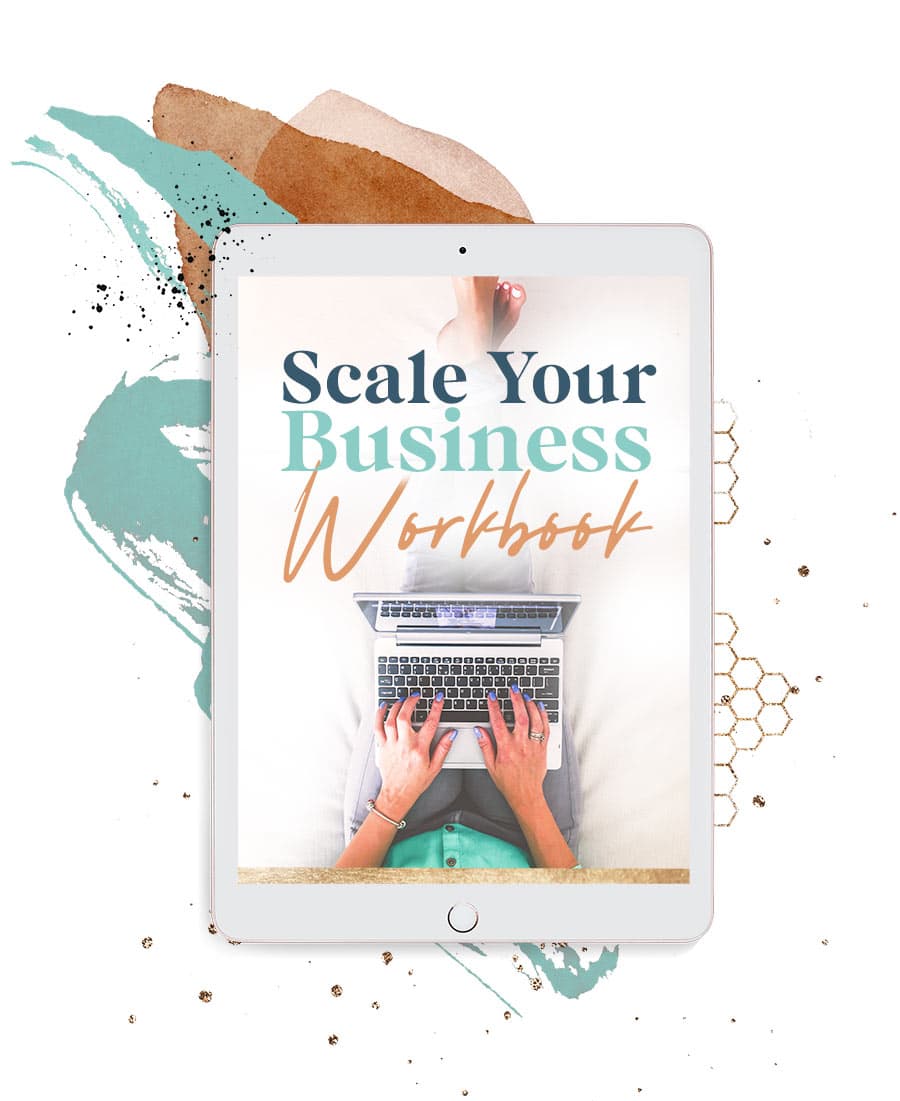Ever lit your favorite candle, whipped out a gorgeous handwritten journal and worked through one of those “Ideal Day” exercises – you know, where you write everything you’d like to happen in your typical day if you had unlimited resources, time and energy – only to realize how far your current typical day is from your ideal day?
If so, I get it and I’ve been there.
Today, we’re diving into the art of planning your ideal day and, most importantly, sticking to it (or at the very least, some of it).
One caveat first, though: Keep in mind an ideal day is still just that – an ideal, not an everyday reality. While some days you might be able to come close to your ‘Ideal Day’ quite often, other things (like, ahem, life – children, sickness and/or the WiFi running suuuuper slow) might temporarily derail you – and that’s totally okay (and expected!).
1) Be Sure You Have a Vision
Before you even start to plan out your Ideal Day, it’s important to work through an Ideal Day Exercise if it’s been a while. A few basic questions you can ask yourself include: Where do I want to live? How do I ideally want to spend my time? Who do I want to spend my time with? What are the activities I want to do every week? What are the feelings I want to feel every week?
In order to get us prepped for actually planning out your Ideal Day, here are a few quick questions you can ask yourself:
What are my top business priorities?
- Start by identifying the key tasks or projects that are most important for your business’s growth and success. These could include activities like content creation, client meetings, product development, marketing, or financial planning. Knowing your top priorities will help you structure your ideal day around what matters most.
When am I most productive?
- Determine when you feel most energetic, focused, and creative during the day. Some people are early birds, while others are night owls. Ultimately, you’ll want to align your high-priority tasks with your peak productivity hours – more on that in a sec.
What do I want my lifestyle to look – and feel – like?
- Consider your personal life and well-being. Your lifestyle – and what you do outside of your business – is just as important as what you do in it. How much time do you want to dedicate to your business, and how much to your personal life, family, and self-care?
What tasks would I love to delegate or automate?
- Are there particular tasks that really drain you? Review your daily tasks and identify if you can delegate anything to a virtual assistant or automate it with technology. Freeing up your time from mundane, frustrating or time-consuming tasks can give you more space for strategic activities – or an ultra-nourishing at-home spa day. Speaking of…
How can I incorporate personal growth and self-care into my day?
- Don’t forget about self-improvement, personal development and/or self-care. Your ideal day should include time for personal growth, whether it’s reading a nonfiction book to hone your craft (or a juicy fiction one to disconnect from the world), applying your favorite face mask or practicing 10-20 minutes of mindfulness.
2) Define Your Big Rocks
Now that you have a vision, it’s time to get down to the nitty gritty of planning your Ideal Day.
Here’s the scenario: Imagine that your day is a jar, and your tasks as different-sized rocks. To make it all fit, you need to start by placing the big rocks at the bottom first. These ‘big rocks’ are your most important tasks for the day. This will obviously differ depending on the vision you just mapped out and questions you just answered. Maybe your ‘big rocks’ are business strategy, or client meetings, or creative product brainstorming sessions.
Most people decide to tackle their big rocks at the beginning of the day, when they have the most energy. But if you’re a night owl or always hyped after lunch, you might choose to schedule in and tackle your Big Rocks then, instead.
The point is to ensure you pencil in your priorities first, and then center the rest of your day around them.
If you’re a biz coach, for example, “growth” might be a top priority. So, what activities contribute to your business growth? Maybe it’s an hour or two everyday morning for “CEO time” or other strategic planning, or a set “Financial Date” to do your bookkeeping or meet your bookkeeper or accountant to feel confident about (and stay on top of) your finances, so you always know if you can invest in a new course or mentor – or not.
Your Big Rocks don’t have to be business-related, either. If feeling calm and peaceful or working on your personal development is a major part of your Ideal Day, then a Big Rock for you might be that 20 minutes of mediation.
Write down 1-3 Big Rocks, and pencil in what time of day you think might work best for you to complete them – ideally, of course.
3) Pinpoint Secondary Priorities
Since not everything can be a Big Rock, it’s also important to get clear on what are your secondary priorities. These are the ‘nice-to-haves’ in your day. They’re either things you want to get done or know you need to get done.
Maybe mindfulness isn’t a Big Rock for you – but it is a secondary priority. It’s something you can skip if you have to, but when you’re truly living out your Ideal Day, you won’t. Try pinpointing another 1-3 secondary priorities. And as always, ensure they fit into your big vision and drive you toward your ultimate goals in some way. You’ll also want to map out what time of day would work best for these particular priorities.
4) Time Block for Laser Focus
Now that you have a general idea of #allthethings you want to fit into your Ideal Day, let’s talk about the elephant in the room: how to actually live out and stick to your Ideal Day.
Time blocking is the not-so-secret weapon of many high-achieving entrepreneurs – and I think it works perfectly when crafting an Ideal Day.
If you truly know you need or want to get a specific task done in a week, you can’t just ‘hope’ it’ll happen. Instead, schedule it and make time for it. That’s all time-blocking is: dedicating specific blocks of time to particular tasks that matter to you.
Maybe your Ideal Day includes plenty of time to create & publish content, so you decide to dedicate your mornings from 7-10am to writing content, and your afternoons to editing the morning’s content for publication.
No matter what your unique Big Rocks & priorities are, the next step is to go ahead & write them down in a planner and/or insert your Google Calendar.
The goal is truly treating these time blocks like any other appointment, to ensure you stay on track. If you do schedule them in digitally, you can even make sure you’re marked as busy, so other people can’t book meetings with you (if you have your calendar connected to a scheduling app), for example.
5) Beware of the Multitasking Trap
Another way to ensure you stick to your Ideal Day (at least, mostly)? Avoiding multi-tasking. While multitasking might make you feel a bit like a superhero, it often leads to decreased efficiency and increased stress in the long run. Instead, do your best to follow your time blocks and focus on one task at a time. Give it your full attention, turn off distractions (including putting your phone on Do Not Disturb, if need be) and/or let others know you’re busy. Trust me: I think you’ll be amazed at how much more you accomplish.
This goes for anything you put in your Ideal Day – and within your time blocks. For example, if you’re a graphic designer who tends to juggle multiple design projects simultaneously and never seems to get your projects done in a timely manner, try focusing on just one during each time block. (Spoiler alert: Your creativity will soar, and even better, your clients probably notice, too.)
6) Embrace Technology
If you’re struggling to stick with your time blocks–I get it. The good news is there’s an app for everything these days, and many can help you streamline your day. Whether it’s task management apps, calendar tools, or productivity hacks like the Pomodoro Technique (where you laser-focus on work for 25 minutes, then take a 5-minute break to refresh) it’s easy to find the tech that works best for you.
Choose tools that fit your unique goals. If you want to save time so you can squeeze in a morning meditation, look for tools that automate or speed up repetitive processes – or find a great meditation app like InsightTimer or Calm that will “nudge” you to meditate with a notification on your phone.
Or – another example – if your ideal day includes more time to dream up digital product ideas, can you turn on a “website blocker” that keeps you off Facebook and out of your inbox, but still allows you to access Word or a brainstorming Google Doc?
Technology can be a hinderance if you let it, but it can also be a powerful motivator and even making reaching your “Ideal Day” #goals easier.
7) Learn to Say No
This might be the most obvious, yet hardest, tip in this post. Your time is precious, so you need to guard it fiercely, gorgeous. Don’t overcommit yourself. Saying no to non-essential tasks or opportunities that don’t align with your goals allows you to focus on what truly matters.
(And side note: If you struggle with this, I have a whole blog post on the art of gracefully saying no, as well as how to choose the ‘right’ commitments in the first place.)
8) Reflect and Adjust
At the end of each day or week, be sure to take a moment to reflect on what went well and what didn’t. Adjust your plan for the next day (or week) accordingly. Use a simple journal to win out your daily wins and daily challenges. Note what ‘worked’ – aka what tools, techniques, etc. helped you stick closest to your Ideal Day – and what didn’t.
Over time, with commitment, I’m confident you can – and will! – inch closer and closer to your Ideal Day – even as it evolves.







